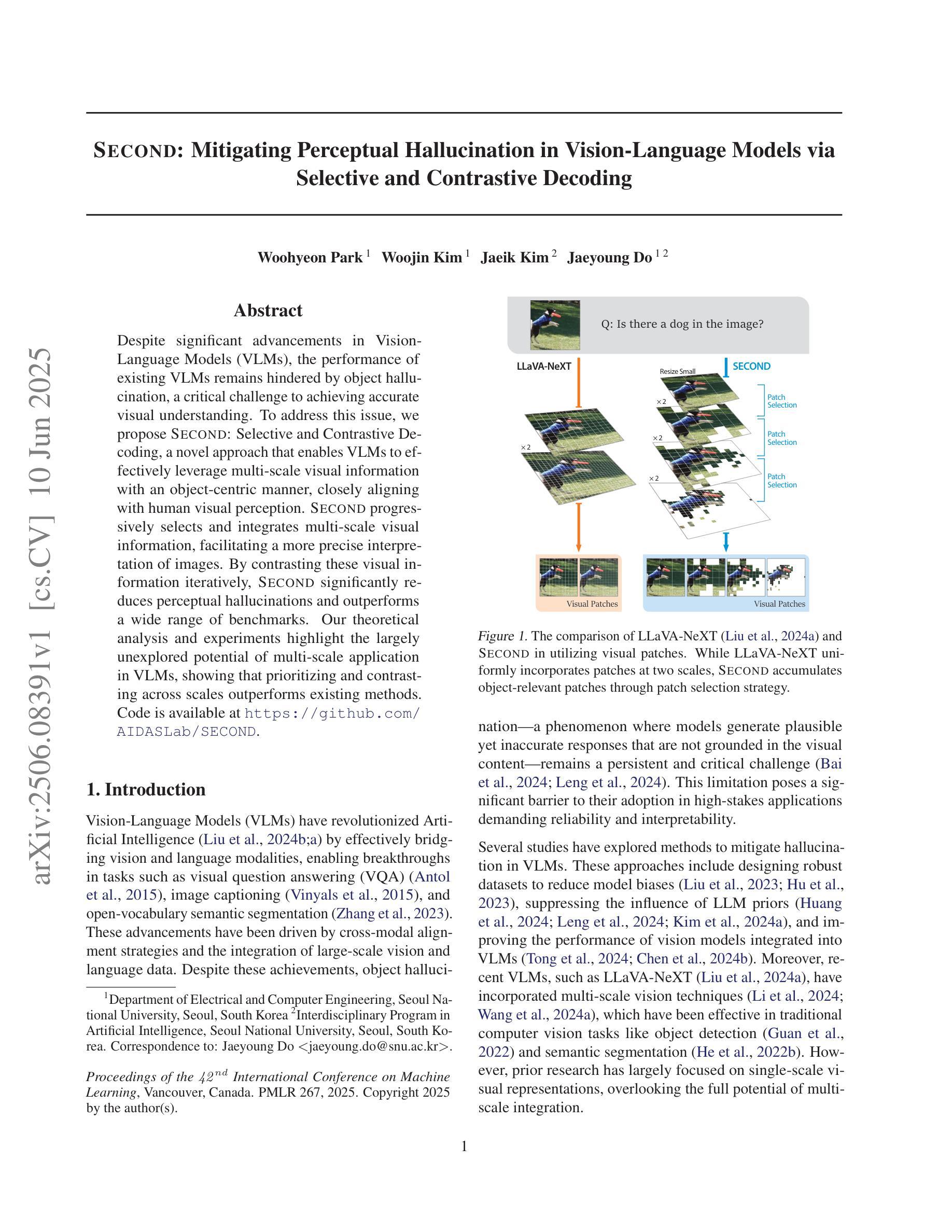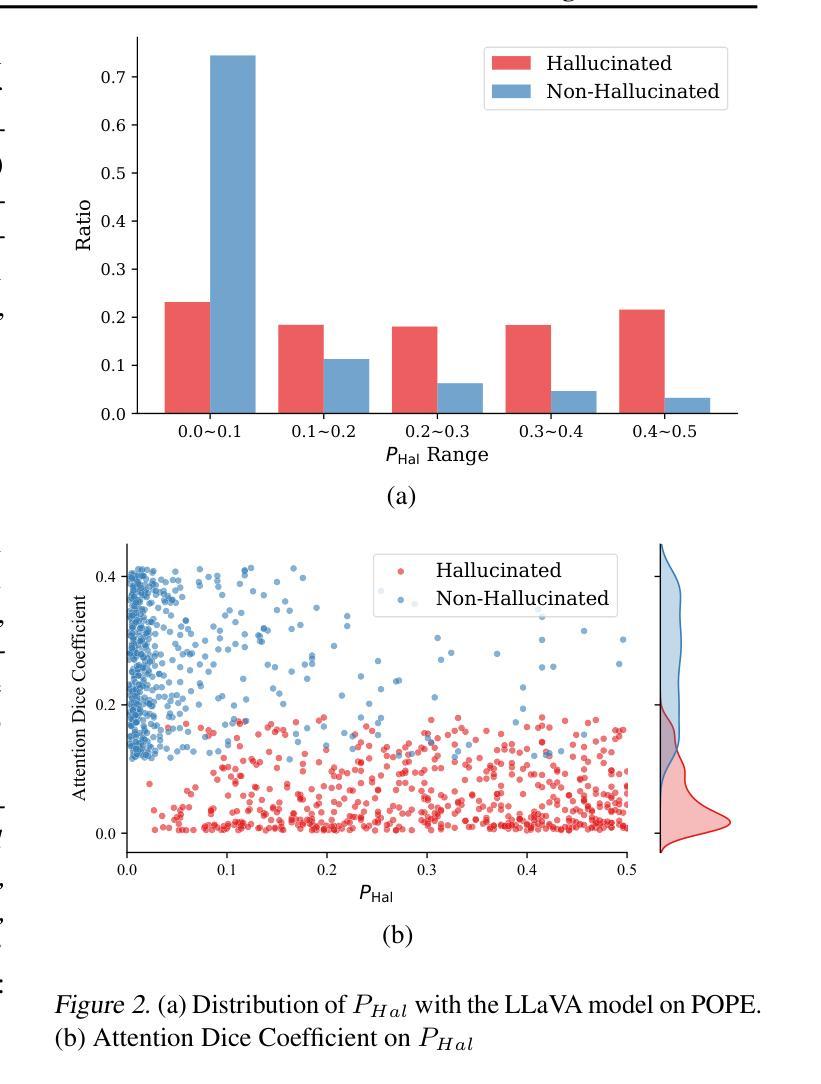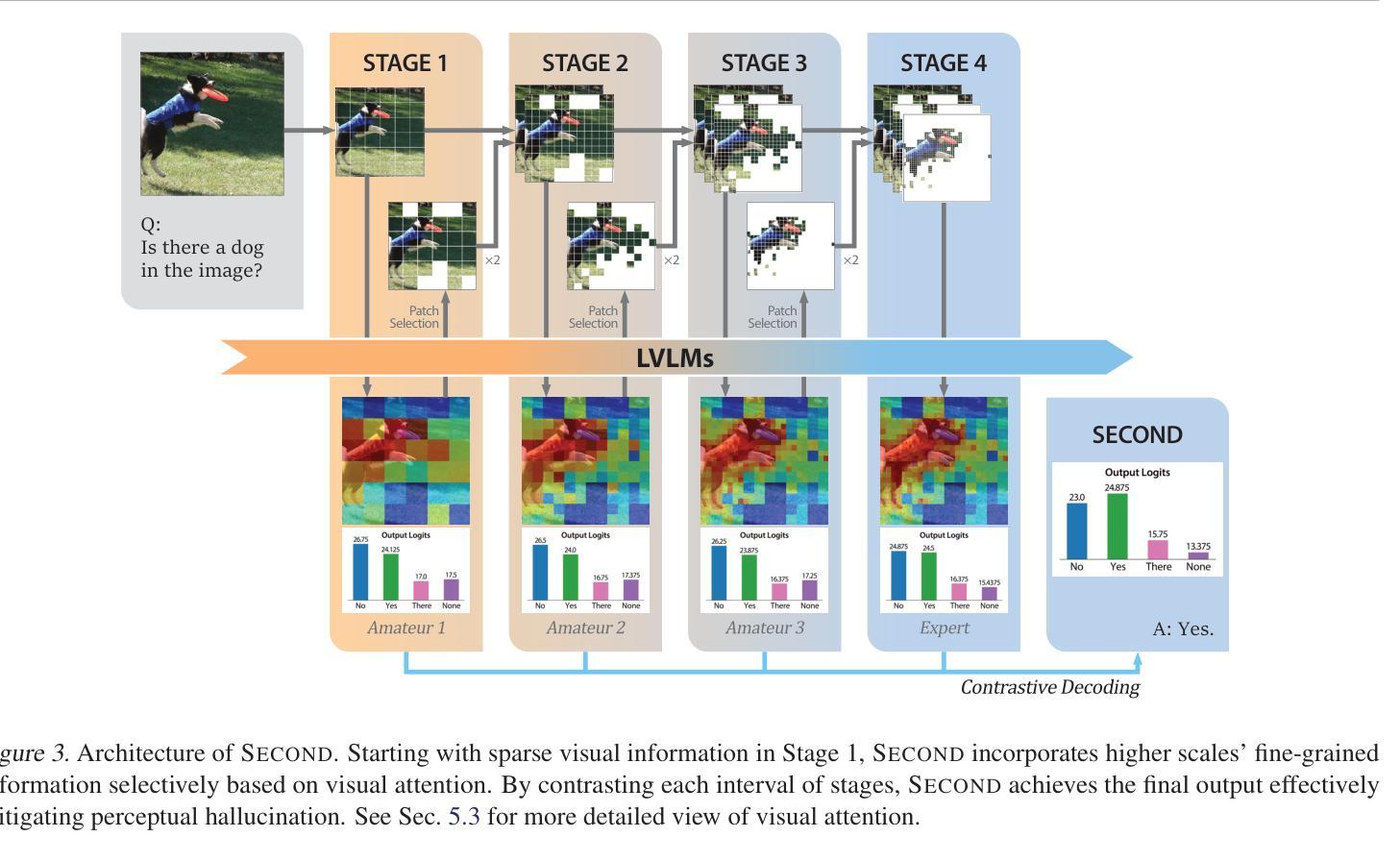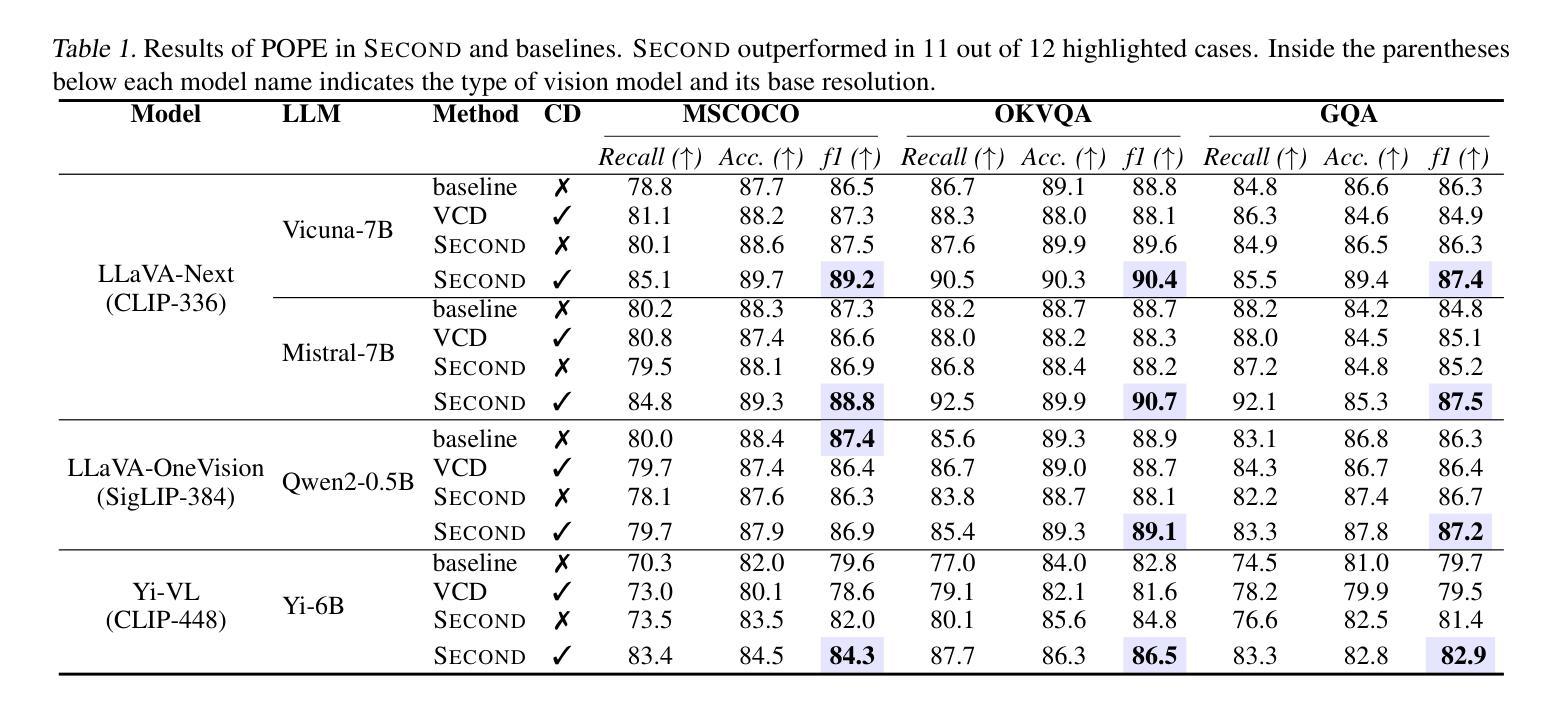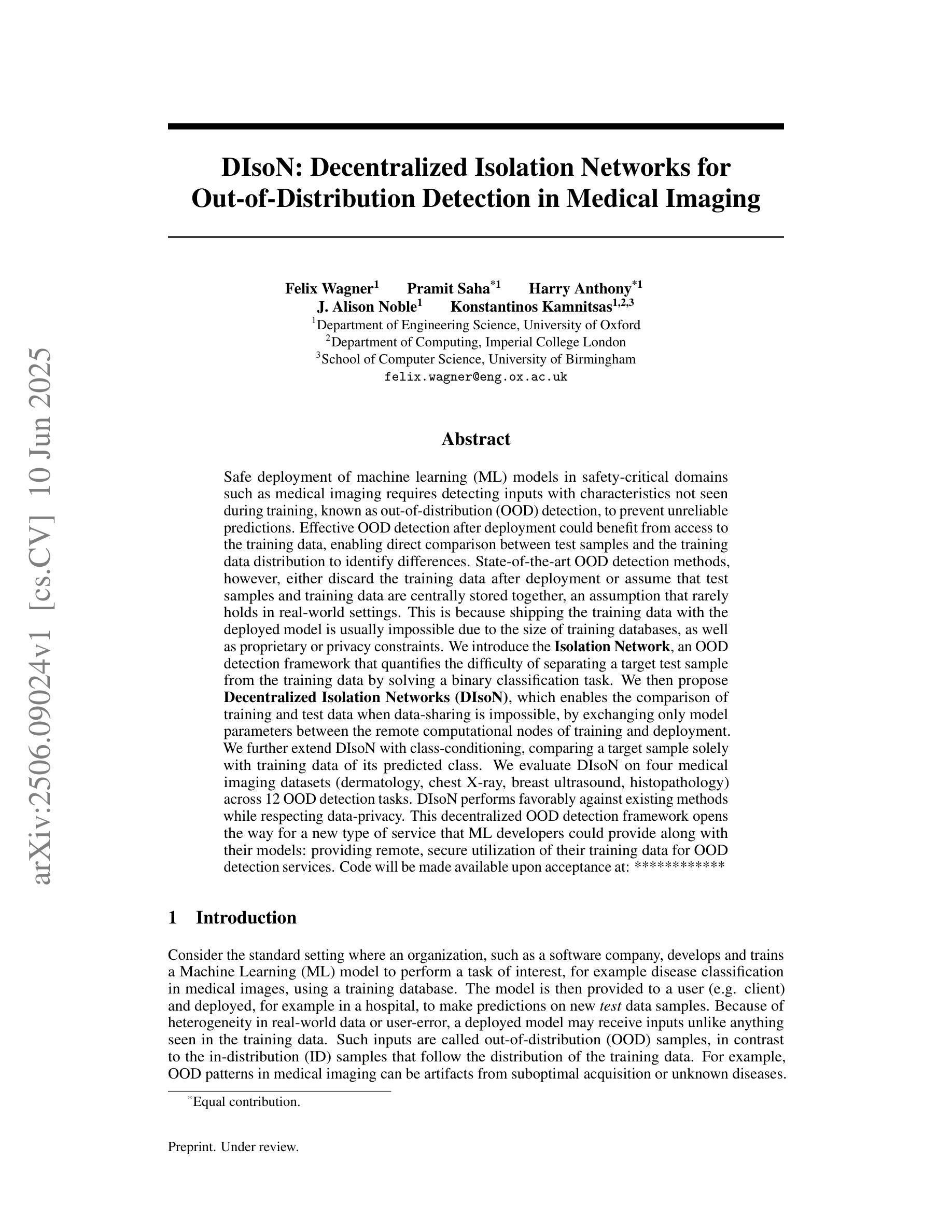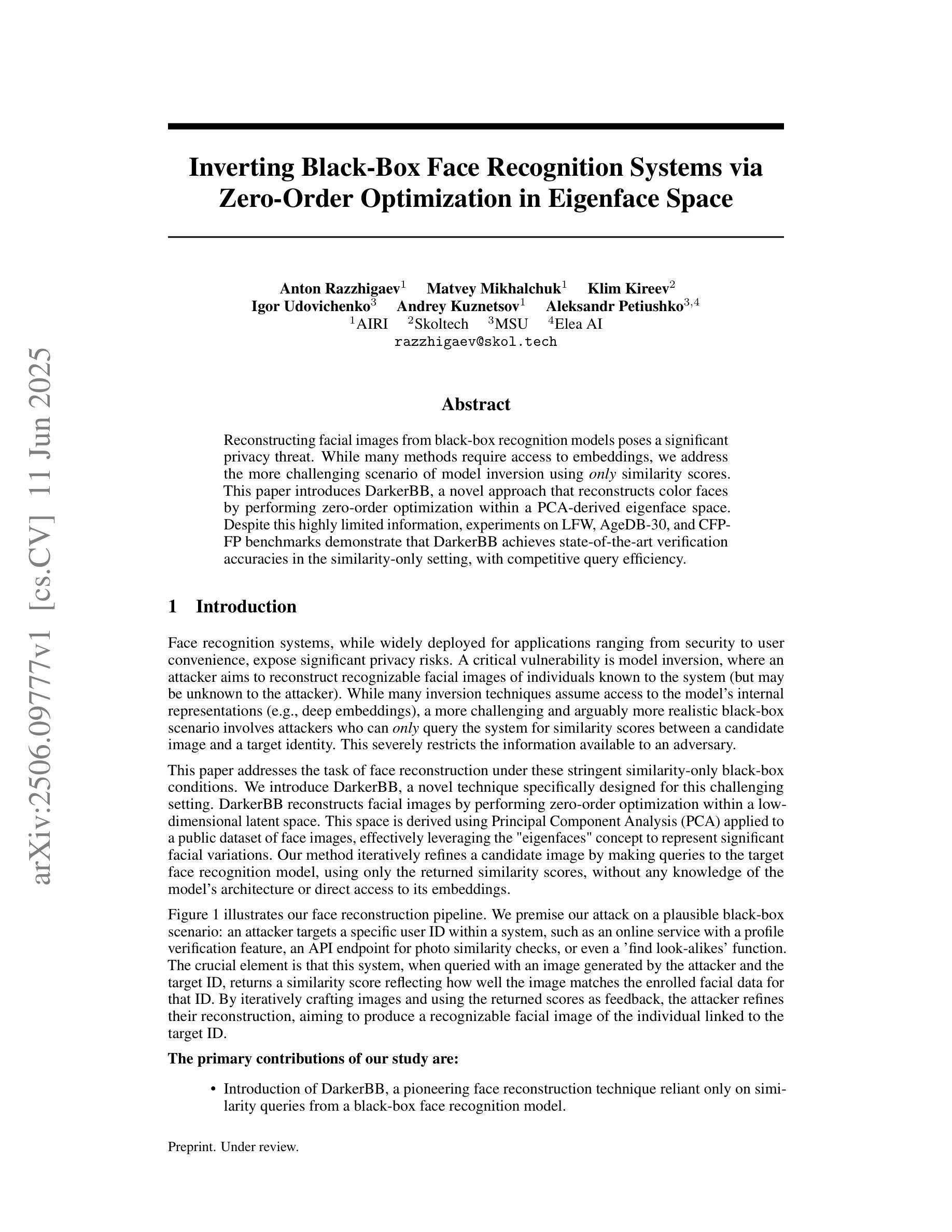⚠️ 以下所有内容总结都来自于 大语言模型的能力,如有错误,仅供参考,谨慎使用
🔴 请注意:千万不要用于严肃的学术场景,只能用于论文阅读前的初筛!
💗 如果您觉得我们的项目对您有帮助 ChatPaperFree ,还请您给我们一些鼓励!⭐️ HuggingFace免费体验
2025-06-13 更新
SECOND: Mitigating Perceptual Hallucination in Vision-Language Models via Selective and Contrastive Decoding
Authors:Woohyeon Park, Woojin Kim, Jaeik Kim, Jaeyoung Do
Despite significant advancements in Vision-Language Models (VLMs), the performance of existing VLMs remains hindered by object hallucination, a critical challenge to achieving accurate visual understanding. To address this issue, we propose SECOND: Selective and Contrastive Decoding, a novel approach that enables VLMs to effectively leverage multi-scale visual information with an object-centric manner, closely aligning with human visual perception. SECOND progressively selects and integrates multi-scale visual information, facilitating a more precise interpretation of images. By contrasting these visual information iteratively, SECOND significantly reduces perceptual hallucinations and outperforms a wide range of benchmarks. Our theoretical analysis and experiments highlight the largely unexplored potential of multi-scale application in VLMs, showing that prioritizing and contrasting across scales outperforms existing methods.
尽管视觉语言模型(VLMs)取得了重大进展,但其性能仍然受到物体幻觉(实现准确视觉理解的关键挑战)的阻碍。为了解决这个问题,我们提出了SECOND:选择性对比解码,这是一种新方法,使VLM能够有效地利用多尺度视觉信息,以面向对象的方式紧密配合人类视觉感知。SECOND逐步选择和整合多尺度视觉信息,促进图像更精确的解读。通过迭代对比这些视觉信息,SECOND显著减少了感知幻觉,并在各种基准测试中表现出卓越的性能。我们的理论分析和实验突出了多尺度应用在VLM中的尚未广泛探索的潜力,表明跨尺度的优先排序和对比优于现有方法。
论文及项目相关链接
Summary
本文提出了一个名为SECOND的新方法,旨在解决视觉语言模型中的对象幻视问题。通过选择性和对比解码的方式,SECOND能更有效地利用多尺度视觉信息,实现与人的视觉感知相一致的对象中心化处理。通过渐进式选择和整合多尺度视觉信息,以及对比迭代这些视觉信息,SECOND能显著减少感知幻视,并在一系列基准测试中表现出优异性能。
Key Takeaways
- SECOND方法旨在解决视觉语言模型中的对象幻视问题。
- SECOND通过选择性和对比解码,有效利用多尺度视觉信息。
- SECOND方法实现了与人的视觉感知相一致的对象中心化处理。
- 通过渐进式选择和整合多尺度视觉信息,SECOND能更精确地解释图像。
- 对比迭代视觉信息有助于减少感知幻视。
- SECOND在多个基准测试中表现出优异性能。
点此查看论文截图
